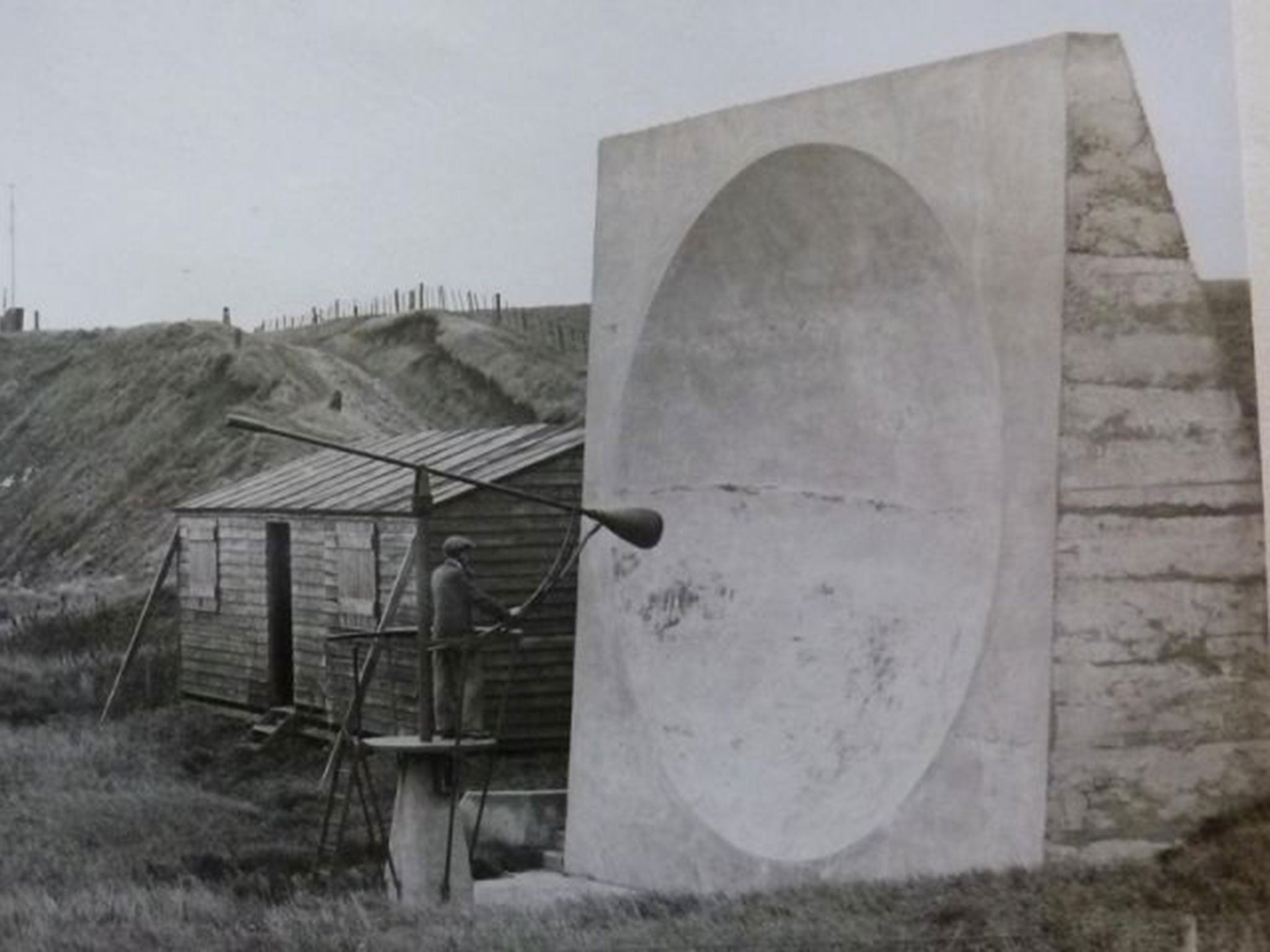Sound mirrors - the earliest form of air raid warning - unearthed on South Coast
First World War early warning systems discovered near Dover

Your support helps us to tell the story
From reproductive rights to climate change to Big Tech, The Independent is on the ground when the story is developing. Whether it's investigating the financials of Elon Musk's pro-Trump PAC or producing our latest documentary, 'The A Word', which shines a light on the American women fighting for reproductive rights, we know how important it is to parse out the facts from the messaging.
At such a critical moment in US history, we need reporters on the ground. Your donation allows us to keep sending journalists to speak to both sides of the story.
The Independent is trusted by Americans across the entire political spectrum. And unlike many other quality news outlets, we choose not to lock Americans out of our reporting and analysis with paywalls. We believe quality journalism should be available to everyone, paid for by those who can afford it.
Your support makes all the difference.In the days before radar, Britain’s best hope of detecting German bombers hidden by the cover of darkness or cloud during the First World War was simply to listen out for the enemy aircraft as they approached over the channel.
The military did have some primitive technology to help them, however: concrete “sound mirrors” built along the coast, that helped concentrate and amplify the noise of the engines.
Sixteen were built, but while some have survived it was thought that other historically important examples had been lost forever until this year. Now two are being unearthed and restored after being covered in soil and rubble for decades.
The eldest of the two sound mirrors located in Fan Bay, just over a mile away from the white cliffs of Dover, was constructed in either 1917 or 1918, while the second is an interwar construction dating from between 1921 and 1929.
The imposing constructions stood 15ft to 20ft high and were carved into chalk, then covered in concrete as it has good reflective properties.
They worked by concentrating sound waves to a central point, and were manned by trained operators listening through a stethoscope to distinguish between the different sounds being picked up and identify potential threats up to 25 miles away.
The mirrors were a component of one of the world’s first early-warning systems, the London Air Defence Area, but became obsolete with the development of radar, leading to the remaining structures falling into a state of disrepair. Archaeologists previously believed the two standing at Fan Bay had been destroyed in the 1970s during an attempt to clean up the local area by the council. However, in May 2014 the National Trust discovered that they had been buried under 600 cubic metres of soil and rubble.
Keith Parfitt, a local archaeologist from Canterbury Archaeological Trust, said: “I have known the area since I was a teenager and remember seeing the sound mirrors before they were buried in the 1970s. It is still a matter of deep regret to me that so much was demolished in Dover during this time, so it has been very rewarding to help the team at the White Cliffs rediscover the sound mirrors this year.”
He added: “I cannot wait to stand on the landscape and admire the sound mirrors once they are fully exposed; they will be a real point of interest for visitors.”
The excavation work is being carried out by three archaeologists and a group of 50 volunteers, with machinery removing surface materials before more delicate digging is conducted closer to the mirrors.
Little is known about the origins of sound mirrors. It is believed an experimental device was built at Detling Aerodrome in Kent in 1915, although it no longer survives, and there is no inventor credited with the idea.
The land was bought by the National Trust in 2012 after a public appeal raised £1.2m. Jon Barker, a visitor experience manager at the White Cliffs, said it was “a significant national discovery and we hope that visitors will be as amazed as us at their survival”.
Join our commenting forum
Join thought-provoking conversations, follow other Independent readers and see their replies
Comments